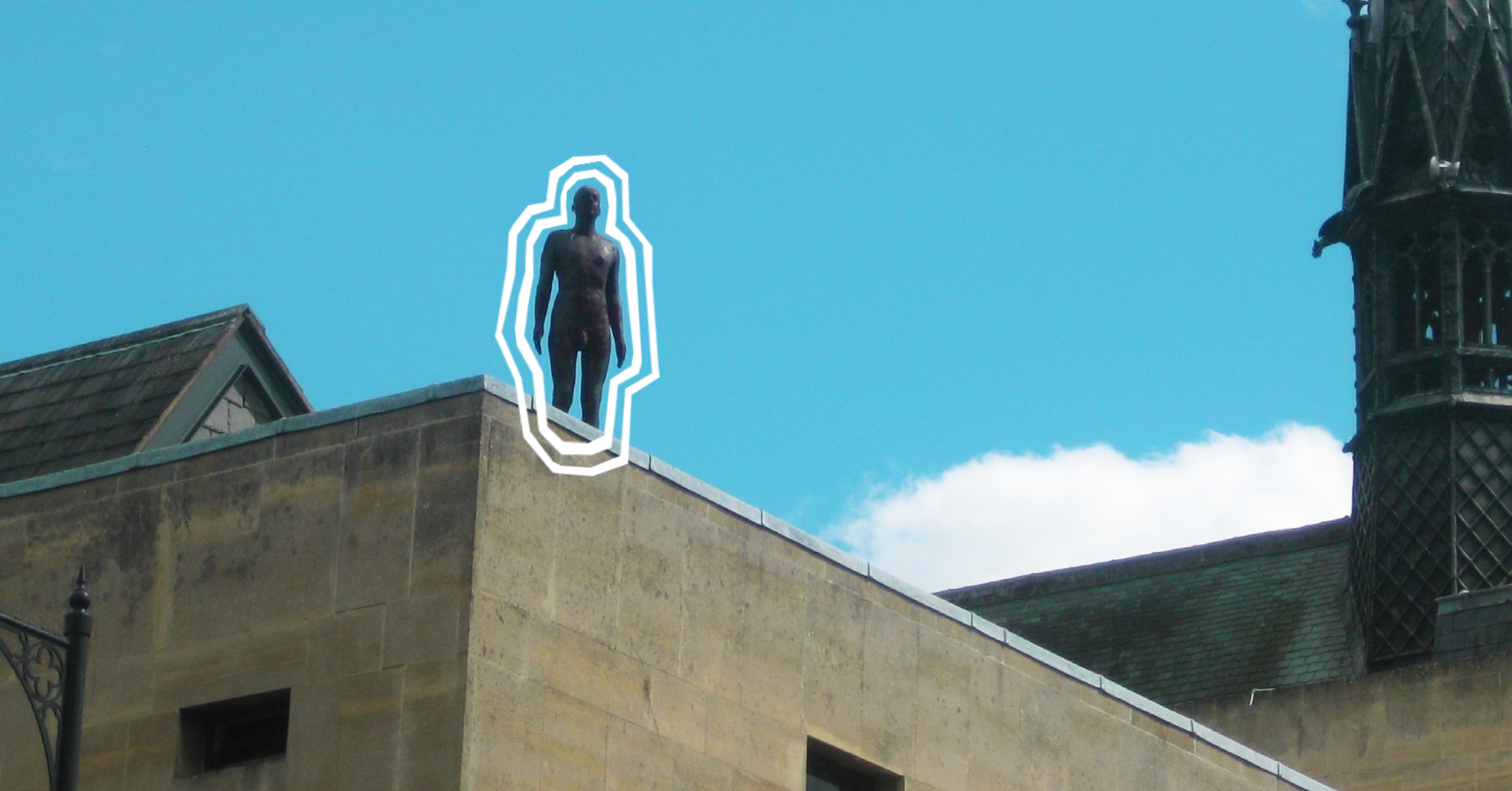Have you ever had the feeling that someone’s watching you? That feeling that makes the hairs on the back of your neck stand up. The feeling you get at night when you turn off the downstairs lights and run as fast as you can up the stairs and into bed.
If you can relate, then you’re either Rockwell in his ‘80s hit single ‘Somebody’s Watching Me’, or you’re an Oxford student walking down Broad Street. Maybe you haven’t even noticed, but someone is watching you – and it’s a seven-foot man stood on the roof of Exeter College.
Fear not. He is, in fact, made of iron, donated by Antony Gormley to Exeter College in 2009, and is one of a hundred identical sculptures scattered across the world. Gormley’s collection, entitled Another Time XI, was declared by him to be a celebration of “the still and silent nature of sculpture.” “The work is designed to be placed within the flow of lived time,” he says, each statue placed on high buildings as if overlooking the streets below.
Although better known for his Angel of the North, Gormley’s work is no stranger to Oxford. Another of his statues, entitled Present Time, is located in the centre of Mansfield College’s main quad. Each sculpture cast from his own body, Gormley intends his work to capture the nakedness of life, telling the Guardian that it returns us to “the truth of the uniqueness of human existence.”
But let’s be realistic here: how many people, just by looking at them, know what these sculptures mean? And why are they considered public art?
Public art, as a genre, usually refers to art that enhances its community or speaks to our time. Anish Kapoor’s Cloud Gate is the perfect example, one of Chicago’s most popular tourist destinations. Commonly known as ‘the Bean’, it literally reflects its environment, forming the perfect backdrop for your next Instagram post – a mirror that warps the skyline behind it. Even in London, Katharina Fritsch’s sculpture of a giant blue cockerel seems to mean something to its community. Although appearing to be something you might see in a fever dream, Fritsch’s Hahn/Cock has become a bright symbol of modernity in Trafalgar Square. But what, you may ask, do iron sculptures of naked men have to do with Oxford? Does anyone know? Or are we all just pretending to?
Maybe this uncertainty is what makes public art successful. With no disrespect to the Ashmolean, it’s safe to say that art galleries have trained us into a ritual: we look, read the label on the wall, nod our heads, and move onto the next exhibit. Instead, public art often goes unnoticed, integrated into our everyday lives.
Lining the outside walls of the Bodleian, the stone grotesques might not be an emblem of Gothic architecture to one student, but a reminder of the first thing they see when they emerge, dazed, from a midday essay crisis. In fact, these exact grotesques were created in 2009, designed by schoolchildren for the theme ‘Myths and Monsters’. They were then produced by local stone carver, Alec Peever. Now a part of history, their success is not a piece of art with a label attached. Instead, it is embedded in the heart of Oxford’s daily life.
Oxford’s public art might be in more places than you think. The formidable carved figures outside the Sheldonian Theatre, known as the ‘Emperor Heads’ or the ‘Sheldonian Emperors’, aren’t just confined to Broad Street. First commissioned in the 1660s, the specific identity of all thirteen faces remains unknown. The stone carvings are suspected to depict ancient philosophers or emperors but have been weathered and replaced twice. Although not all the original heads have been found, some can be seen standing in Worcester College and Wadham College gardens.
Although slightly less of an enigma, Diana Bell’s Knowledge and Understanding remains a notable piece of art in Oxford city centre. Cast in bronze, piles of books have been stacked on benches in Bonn Square. Presented to Oxford by the city of Bonn in 2009, their spines are engraved with German translations of ‘friendship’, Oxford being the first city to approach Bonn to establish a friendship after the Second World War. Here, Bell’s sculptures serve as a quiet reminder of peace.
Oxford’s public art is scattered right across the city – and its history just keeps evolving. Is public art defined by how the artist intended it to be perceived, or have we, as passers-by, given it new meanings over the years? Is this what makes it public?
In the wake of a national lockdown, we seem to appreciate the surroundings we have and miss the ones we don’t. Maybe when students flock back to Oxford, public art, having previously flown under the radar, will be like the Gormley statue looming over Broad Street. Once you’ve seen it, you can’t unsee it.



